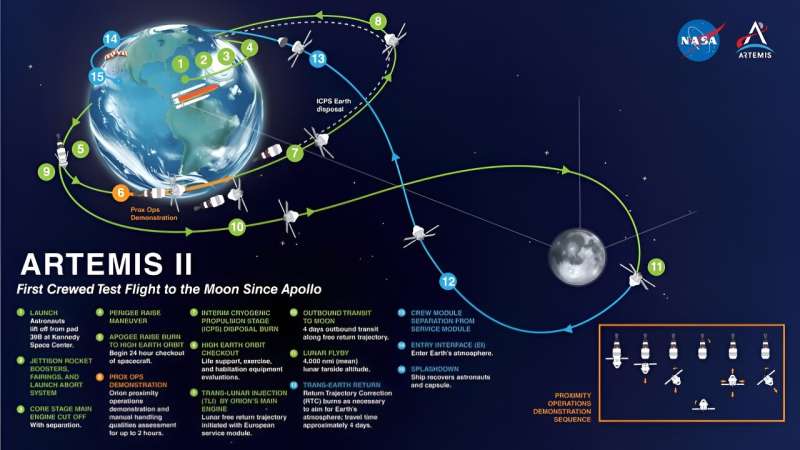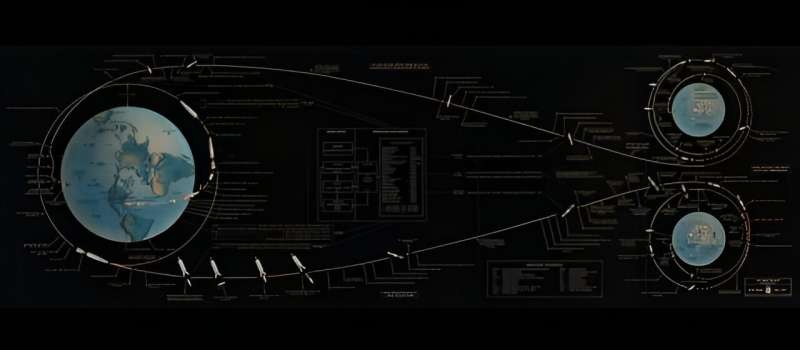Spacecraft could shuttle astronauts and supplies to and from the moon on a regular basis

Multiple space agencies plan to send astronauts, cosmonauts, and taikonauts to the moon in the coming years, with the long-term goal of establishing a permanent human presence there. This includes the NASA-led Artemis Program, which aims to create a "sustained program of lunar exploration and development" by the decade's end. There's also the competing Russo-Chinese International Lunar Research Station (ILRS) effort to create a series of facilities "on the surface and/or in orbit of the moon" that will enable lucrative research.
Beyond these government-agency-led programs, there are many companies and non-government organizations (NGOs) hoping to conduct regular trips to the moon, either for the sake of "lunar tourism" and mining or to build an "International Moon Village" that would act as a spiritual successor to the International Space Station (ISS). These plans will require a lot of cargo and freight moving between Earth and the moon well into the next decade, which is no easy task. To address this, a team of U.S./UK researchers recently released a research paper on the preprint server arXiv on the optimum trajectories for traveling between Earth and the moon.
The team consisted of Professor Emeritus Thomas Carter from Eastern Connecticut State University and mathematical sciences Professor Mayer Humi from the Worcester Polytechnic Institute. For the sake of their study, Carter and Humi examined how a shuttle could transport supplies to a lunar outpost and carry back resources extracted from the surface. Based on their calculations, they concluded that a trajectory that places the shuttle into an elliptical orbit and minimizes the thrust requirements would be optimal.
During the Space Race, both NASA and the Soviet space program relies on free-return trajectories to send missions to the moon. This consisted of using the moon's gravitational pull to perform a figure-eight-shaped maneuver resulting in the spacecraft returning home with only minimal orbit adjustments (minimizing the amount of propellant needed). The orbits of Artemis missions will be similar to their Apollo predecessors in that they will also perform figure-eight flights that end with "splashdown" in the ocean.
In other words, these missions will be one-way trips. But beyond returning astronauts to the moon, assembling the Lunar Gateway, and establishing the Artemis Basecamp on the surface, the long-term aim is to use the Artemis infrastructure to create a permanent human presence on the moon. There is also the need to keep things cost-effective, which makes launching heavy payloads from the surface to the moon inefficient. As co-author Professor Humi explained to Universe Today via email, their proposal envisions a shuttle that would orbit Earth and the moon:
"One of [the ISS'] 'functions' is avoid sending large loads to low Earth orbits. Instead we send 'capsules' with provisions and replacements for astronauts. To accomplish [lunar settlements] with minimum cost, we need something similar to the ISS but with an orbit around the Earth and the moon. This shuttle will never land on Earth or the moon. Capsules from Earth will dock with it when it is close to Earth, and similarly, capsules from the moon will dock with it when it is near the moon. This will avoid the need to lift large loads from Earth or the moon, and this will save a lot of money and resources."
However, the shuttle will need engines and propellant to keep this shuttle in orbit as it is subject to gravitational perturbations (from Earth, the moon, and the sun). While the shuttle will not require the massive thrusters and propellant tanks needed to break free of Earth's gravity, engines and propellant add significant amounts of mass to a mission, which drives up costs. To address this, Humi and Carter considered maneuvers that would minimize fuel consumption while allowing the shuttle to circle the Earth-moon system in a reasonable amount of time.
"The process we used to obtain our results was to develop proper mathematical models based on the gravitational forces of Earth, the moon (and the sun) that impact the orbit of the shuttle," said Humi. From this, they determined that a circular, elliptical orbit with a perigee near Earth and an apogee beyond the moon would be the optimal trajectory. Only minimal thrust would be required for course corrections, negating the out-of-plane effects of solar gravity, which could be further reduced by ensuring that the orbital eccentricity stays near zero.

This type of shuttle and trajectory, said Humi, is needed for any plans to establish a permanent Human presence on the moon, but could also lead to a thriving Earth-moon economy:
"At present, there are plans for a permanent 'outpost' on the moon. This outpost will need supplies from Earth to function properly (food, medicine computers, replacement parts for the Robots, etc.) and a mechanism for astronauts' replacements). At the same time, it will send back to Earth items that are in very short supply on Earth (e.g., helium-3) which, according to all theoretical calculations, is the fuel needed for a fusion reactor."
With the signing of the U.S. Commercial Space Launch Competitiveness Act in 2015 and the U.S. Commercial Space Launch Competitiveness Act order of 2020, the U.S. government has clarified that commercial activities on the moon will include resource extraction. In addition to securing mineral resources (such as rare Earth metals that are vital to electronics and digital devices), scientists have dreamed of the day when lunar sources of helium-3 would be within reach since it would allow for the widespread use of fusion reactors to meet our energy needs. Humi and Carter included a caveat in their study, saying that their results would require further testing and verification. As they noted in their conclusions:
"It should be possible to devise a control system that drives the craft back to the designated orbit in order to compensate for disturbances that were not considered in the analysis. It might be argued that could one could guess that the circular orbit of the shuttle provides the optimal orbit in terms of thrust. However this orbit has a trajectory of maximum length. It follows then that the result obtained in this paper though it might be 'intuitively clear' is not necessarily obvious."
Provided by Universe Today
More information: T. Carter et al, Determination of the Optimal Elliptical Trajectories Around the Earth and Moon, arXiv (2023). DOI: 10.48550/arxiv.2308.01133
No comments:
Post a Comment